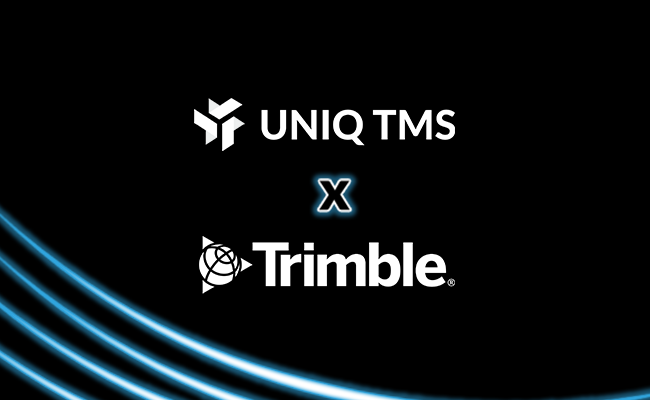Bridging the Gap: Training Non-Tech Savvy Employees on TMS

Technology is advancing at a rapid pace, and companies are constantly adopting new tools and systems to stay competitive. One such system is Transportation Management Software (TMS), which helps businesses streamline their transportation operations. However, not all employees are tech-savvy, and training them on TMS can be a challenge. In this article, we will explore the common barriers to learning TMS and discuss strategies to bridge the gap and engage non-tech savvy employees in the training process.
Understanding the Challenges of TMS Training for Non-Tech Savvy Employees
Identifying the Common Barriers to Learning TMS
When it comes to TMS training, non-tech savvy employees often face several challenges. One of the main barriers is a lack of familiarity with technology. They may find it difficult to navigate the software and understand its features. Another common obstacle is resistance to change. Some employees may be resistant to learning new systems because they are comfortable with the existing processes. Overcoming these barriers requires a tailored approach to training.
Non-tech savvy employees may also struggle with feeling overwhelmed by the complexity of TMS. The abundance of features and functionalities can be intimidating, leading to a sense of frustration and confusion. Additionally, the fear of making mistakes while using the system can hinder their learning process. Addressing these emotional barriers is essential in creating a supportive learning environment.
The Importance of Tailoring Training to Different Skill Levels
Not all employees have the same level of technical proficiency. Some may be beginners, while others may have some experience with similar tools. It is crucial to design a training program that caters to the needs of employees with varying skill levels. This ensures that everyone receives the support they need to effectively use TMS.
Furthermore, offering personalized training sessions can significantly enhance the learning experience for non-tech savvy employees. By providing one-on-one or small group training, trainers can address individual concerns and adapt the pace of learning to match each employee’s comfort level. This tailored approach fosters a sense of empowerment and boosts confidence in using the TMS effectively in their day-to-day tasks.
Developing an Effective TMS Training Program
Key Components of a Successful TMS Training Program
An effective Transportation Management System (TMS) training program is vital for the successful implementation and utilization of the software within an organization. Understanding the key components of the TMS is essential for employees to maximize its potential. This includes becoming proficient in navigating the user interface, accurately inputting and managing data, efficiently generating reports to aid decision-making, and effectively troubleshooting common issues that may arise while using the system. A well-rounded training program should encompass all these aspects to ensure that employees are well-equipped to leverage the TMS to its fullest capacity.
Moreover, a comprehensive TMS training program should not only focus on theoretical knowledge but also provide practical hands-on experience. Incorporating interactive sessions where employees can simulate real-life scenarios using the TMS will help reinforce their learning and build confidence in their abilities. By engaging in hands-on practice, employees can better understand how to apply their training in actual work situations, leading to improved proficiency and productivity in utilizing the TMS.
Incorporating Different Learning Styles into TMS Training
Recognizing that individuals have diverse learning styles is crucial when designing a TMS training program. To cater to the varying preferences and abilities of employees, it is essential to incorporate a range of learning methods and resources. Visual learners may benefit from infographics, charts, and diagrams that simplify complex concepts within the TMS. On the other hand, auditory learners may prefer verbal explanations or audio-guided tutorials to grasp information effectively.
Furthermore, interactive elements such as step-by-step guides, video demonstrations, and gamified activities can enhance the engagement and retention of knowledge among trainees. By offering a mix of learning styles in the TMS training program, organizations can create a more inclusive and effective learning environment. This approach not only accommodates the different ways in which employees absorb information but also motivates them to actively participate in the training process, leading to a more successful TMS implementation across the board.
Strategies for Engaging Non-Tech Savvy Employees in TMS Training
Making TMS Training Relevant and Interesting
Training sessions can sometimes be seen as dull and tedious. To make TMS training more engaging, it is important to make it relevant to employees’ day-to-day tasks. Highlight how TMS can simplify their work processes, save time, and improve efficiency. Additionally, incorporating real-life examples and success stories can make the training more relatable and interesting.
For instance, imagine a scenario where a non-tech savvy employee is struggling with manual data entry tasks that are time-consuming and prone to errors. By showcasing how TMS software can automate these processes, reduce errors, and free up time for more meaningful work, employees can see the direct benefits of the training in their daily work lives.
Encouraging Active Participation in TMS Training
Active participation is key to effective learning. Encourage non-tech savvy employees to ask questions, share their concerns, and actively participate in discussions and exercises. Create a safe and supportive learning environment where employees feel comfortable expressing their thoughts. By fostering active participation, employees will be more engaged and invested in their TMS training.
Furthermore, consider incorporating interactive elements into the training sessions, such as hands-on activities or group projects. This approach not only caters to different learning styles but also allows employees to apply their newly acquired TMS knowledge in a practical setting. By actively engaging in these activities, employees can gain confidence in using TMS tools and feel more prepared to implement them in their daily tasks.
Evaluating the Success of TMS Training
Assessing Employee Competence Post-Training
Once the TMS training is complete, it is important to assess employees’ competence and understanding of the software. Conduct assessments, quizzes, or practical tests to evaluate their knowledge and skills. This provides valuable feedback on the effectiveness of the training program and identifies areas that may require further support or improvement.
One effective way to gauge employee competence is through hands-on simulations that mimic real-world scenarios. These simulations can test not only the employees’ theoretical knowledge but also their ability to apply that knowledge in practical situations. By creating a simulated environment that mirrors their daily tasks, employees can demonstrate their proficiency in using the TMS software to streamline operations and enhance productivity.
Continuous Improvement of TMS Training Programs
Learning is an ongoing process, and TMS training programs should be continually evaluated and improved. Regularly collect feedback from employees to gather valuable insights into their training experience. Use this feedback to refine the program, address any gaps, and incorporate new features or updates to the software. By prioritizing continuous improvement, employees will feel supported in their TMS journey.
Furthermore, consider implementing a mentorship or coaching program as part of the TMS training initiative. Pairing seasoned employees who have mastered the software with those who are still learning can provide valuable one-on-one guidance and support. This mentorship approach not only enhances knowledge transfer but also fosters a sense of camaraderie and teamwork among employees, creating a collaborative learning environment that boosts overall TMS proficiency.
The Role of Management in TMS Training
Leadership Support for TMS Training
Management plays a critical role in the success of TMS training initiatives. Leaders should actively support and promote the training program, highlighting its importance and benefits. Encourage managers to participate in training sessions and lead by example. Their support and involvement will motivate employees and reinforce the importance of TMS adoption.
Effective management involvement in TMS training goes beyond just endorsing the program. Managers should also provide ongoing feedback and guidance to employees as they navigate the system. By offering support and addressing any challenges that arise, managers can help employees feel more confident in their TMS skills and encourage a smoother transition to using the system in their daily tasks.
Promoting a Culture of Continuous Learning
TMS training is just the beginning of the journey. To fully leverage the benefits of the system, it is essential to foster a culture of continuous learning. Encourage employees to explore new TMS features, share best practices, and seek ongoing training opportunities. By creating a supportive learning environment, you can ensure that employees stay engaged and empowered to make the most of TMS.
Furthermore, management can play a key role in promoting a culture of continuous learning by recognizing and rewarding employees who actively engage in TMS training and demonstrate a commitment to improving their skills. By highlighting the value of ongoing learning and professional development, managers can inspire employees to take ownership of their learning journey and strive for excellence in utilizing TMS to its full potential.
Training non-tech savvy employees on TMS may seem challenging, but with the right strategies in place, it can be a seamless and enjoyable process. By understanding the specific barriers employees face, tailoring the training program, and engaging employees through relevance and interactivity, companies can bridge the gap and empower their workforce to effectively use TMS. With leadership support and a culture of continuous learning, companies can maximize the potential of TMS and drive operational excellence.
Ready to Transform Your Transportation Management?
Discover how Uniq TMS can streamline your logistics operations, enhance efficiency, and boost your bottom line. Visit https://uniqtms.com/ today and explore our innovative solutions designed to meet your unique transportation needs.

